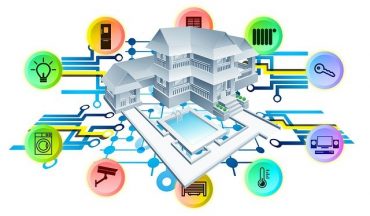
Forward-thinking medical device companies are digitally transforming their operations, using data to provide new services and enhance the product lifecycle.
Today, many medical devices can be remotely monitored, thanks to embedded technologies like the Internet of Things (IoT). Some medical device manufacturers are leveraging such capabilities to enhance the efficiency of service operations. But truly forward-thinking companies are using the technology to digitally transform their entire business operations. They use the data to provide new services, incorporate information gained into the product lifecycle, and more.
To get a better understanding of digital transformation in the medical device industry, common challenges and obstacles to transforming, and potential benefits, we recently sat down with Anthony Moffa, Sr. Director, ThingWorx IIoT Platform at PTC. Here is a summary of our conversation.
What’s the role of digital transformation in the medical device industry?
RTInsights: We’ve seen how digital transformation is key to many industries. What role can it play in the medical device industry?
Moffa: It’s a continuation of something that was started about 20 years ago. The medical device industry was one of the first industries to really start embracing connected services. It started out as machine-to-machine or remote device management and eventually evolved into the Internet of Things. And the beauty of all that was, the industry had the opportunity to do the diagnostics of the equipment from a centralized location, and that obviously helps improve your service experience, customer satisfaction, all of those things. Even with all that, there’s still pressure. When I was in service, we were always asked to do more with less, for less. So, if you think about servicing organizations, they’d release a new product and sell the product. If successful, the installed base gradually grows, and grows, and grows. Yet, you don’t want to grow your service organization at the same rate, right?
And that’s one of the reasons why so many people are adopting digital. Because if you do the math, if you double your installed base, you will have to double the number of people to service that base. If your service organization says, “We want to double our service income,” you have to double the number of people because there is a direct relationship: I need so many technicians to create so much revenue. But as you become capable of integrating a digital format into your workflow, you can really start to streamline operations. Certainly, remote service helped. It made it easy to diagnose device problems. But you still had to dispatch somebody to fix things, on occasion. So now device manufacturers are starting to look at things like self-service—asking, “Could my customer fix certain things?”
That thinking spawned the role of a medical device technician, so-called med techs. And a lot of the hospitals started looking at that because they could speed up the process of medical device maintenance, and maybe do preventive maintenance and all that sort of thing. But the problem with that is, you have to train everybody on every piece of equipment. That is challenging enough, but there is also liability associated with this approach. So, this self-service model where hospital med techs do the work really hasn’t taken off as quickly as everybody would think. One thing that could help is to start doing things like augmented reality or assisted support. For example, PTC’s Vuforia Chalk enables you to do telestration—drawing a freehand sketch over a moving or still video image—with customers on-site. It is a nice addition to the digitization of service because if I’m on the phone with you, you’re explaining something, and you and I are using words, and we may not be talking about the same thing. I might be thinking you’re looking at something that you’re not. In contrast, Vuforia Chalk leverages augmented reality to enable better collaborative maintenance and product repair. It’s a more powerful FaceTime for service needs.
In addition, you can take device data obtained from remote monitoring, create an augmented experience, and overlay instructions on top of a piece of equipment for somebody to do their maintenance. Service in general has been primed for this, because of the growing install base, the complexity of the equipment, and the need for the equipment to be up and running. Like other industries undergoing a digital transformation, medical is no different in that it needs this kind of support.
What are the key technologies that enable digital transformation?
RTInsights: What are the key technologies and emerging trends that will enable the digital transformation?
Moffa: Service is finally beginning to integrate back-end systems. If you go back in time, we were all a pen-and-paper, ledger-type environment. We had siloed data. And at one point in time, somebody said, “Hey, you know what? We need to put this onto a computer because we can have access to data faster.” But when that was done, the various back-end systems, the ERP system, the MRP, and the CRM, were digitized independent of one another. And then finally, people said, “Well, we need to cross-reference this data.” That’s a big piece that’s emerging now, in that data is becoming more ubiquitous and architecting to have an open and interdependent infrastructure.
In this way, accounting has visibility into the MRP system and manufacturing, manufacturing has visibility into engineering, engineering into service, and everybody can see all of this information. So, the ability to access all this data is a huge benefit. Service technicians today have access to that data in their hand via cell phone, tablet, or both. They have instant access to people as if they were right next to them via augmented reality. They can see exactly what customers are looking at, talk to them, and provide them with instruction to do what they need to do. That is probably one of the more significant releases of technology now and that really can make a huge difference.
You’re going to see these steps, and these tiers occur, where other technologies will begin to support even more innovative approaches to service. For example, the more you start to deploy 3D CAD, and you build an efficacy within your organization to create 3D images that are explodable, where you can stretch them apart and see how they’re built, it’s amazingly intuitive and gives you the ability to show someone how to do the service work that they need to do.
What are the obstacles to digital transformation?
RTInsights: What are the obstacles to digital transformation for businesses in the remote monitoring industry?
Moffa: One thing we always talk about when deploying technology into a business is that technology is not the solution; it’s the tool. It is a means to an end, but it is not the end. You need people, processes, and policies around those components.
When it comes to people, there’s a natural pushback for change. The interesting thing about that is today you have a group of young men and women, who have grown up with a binary digitized world. They have been digitized since the beginning of their days in preschool; they’ve grown up in this world. For them, it’s less of a pushback. But you do have a different group who have never grown up with that, and they’re reluctant.
Another issue is that business itself starts to look at digitalization and associated costs. That’s going to be part of the pushback: the cost of the technology itself and the cost of changing your procedures. And then there are the policies that must wrap everything together. If you think about when we started to use email to do business, and we realized we need policies because we could expose information to people we didn’t want the information to get to.
So, you need policy to control and put guide rails around this stuff. We don’t just want to let anybody use it, at any given time, for any given purpose. You have to control that. Merging new technology into your process and establishing policies around it takes time. It takes a concerted effort. You just can’t come up with a technology, drop it in place, and run.
How do you overcome obstacles?
RTInsights: How do you overcome these obstacles?
Moffa: There has to be a top-down, bottom-up, inclusive environment. There’s a little bit of a process here. First of all, you just don’t wave a wand and connect everything that you have in the field, it takes time. There’s an effort associated with that. You need technicians to start that process. And in the process of doing this, you begin to evolve and learn just how much you can do remotely.
When I sold one of the first programs, my pitch was, “Do you want to do twice the business you do today with the same number of technicians?” Because that’s what you’re trying to drive yourself towards. If you normally turn over 5 to 10 percent of your technicians every year, and you’re going to be able to connect some percentage of your base product every year, you’ll eventually create a model where connectivity efficiency gains can offset normal personnel loss.
That’s one of the challenges, that you have to get across to a technician that they’re invaluable to the process and that the technology is there to help them do their job better. And probably one of the biggest things to overcome this is senior management buy-in.
Recognizing the need for process change is also key. The example that we gave to management when I rolled out my first IoT product platform was that if I were to do what I do today, even though I have this connected system, we would automatically dispatch somebody to the site. That completely negates the whole purpose of us connecting the asset. So, we must change our current process to include a decision point: if the asset is connected, we go down one path. If it’s not connected, we go down another path. And that’s a simple process change, but it takes time, and it’s a policy that people have to be taught on, and you have to build that in. There tends to be some inertia that a lot of corporations have to change. They need to build processes within people’s day-to-day operations to get them used to it. That’s certainly a challenge that is best overcome with buy-in and commitment. But once the results become apparent, that challenge becomes an opportunity.
When we talk about digital transformation, sometimes we make it sound like it’s a binary switch: today I was analog, and tomorrow I’m digital. In reality, it’s a continuum or a spectrum. Digitizing your business takes time. For a lot of companies, their IoT programs are in a 5- to 10-year program growth phase. It takes this long because there are so many pieces of equipment out there and there are so many people that such a program needs to touch. It takes time for those things to come into play. And if an organization wants it to happen quickly, they need to assign people to do that. The benefits can be far-reaching. It all depends on what they want to invest in. You get out of it what you put into it.
What benefits can be realized in a successful digital transformation?
RTInsights: What benefits can be realized from a successful digital transformation?
Moffa: Digitization and a digital world allow companies to provide more content around the use of the equipment. The times it’s used, the way it looks on a shift, the efficiency of the equipment, the uptime versus downtime. They can take data that about how assets are operating and turn that into a tool to run the business better.
You get customers now starting to consume the information that service teams give them. The next level might be that we can benchmark you against other customers (without telling you who they are). Your customers can find opportunities to improve or have confidence they are leading. They become reliant on service teams for the network that they’ve created, not just for the product I’ve created.
They find value in that. And when you start doing that, your Net Promoter Scores go through the roof, because you help your customers do their job. You make their life easier. They’re going to tell anyone and everyone in the industry, “Hey, who did you buy your blood analyzers from? Who do you buy your assays from? Who provided your MRI machine? And do you like them? Do you like their service?” And that’s going to be a big plus for you. You’ll watch those Net Promoter Scores go up because customers are getting something that nobody else could provide them. You’ll see customers become proponents of yours, not because you ask them to, but because they’re excited to talk about how you’ve made their lives easier.
A funny story: an end-customer decided that they didn’t want to keep a service provider anymore. So, the technician went to the customer’s site to remove a little box connecting their devices back to the central server. When the technician showed up and started to remove the box, the manager looked at him and said, “Well, what are you doing?” He said, “Well, this comes with the service program, and since you’re not going to renew service, we’re removing it.” His comment was, “Whoa, whoa, wait a minute. I didn’t realize that was the situation. Who do I need to talk to?” And within 24 hours, they were back on the service.
In the end, every part of your business starts to see some benefits from digitalization.
Learn more about remote monitoring for healthcare organizations on July 30th when Salvatore Salamone, Editor-in-Chief, RTInsights hosts an interactive discussion with Dr. Joerg Traub, CEO of Forum MedTech Pharma, and Rene Zoelfl, Chairman of the PTC Healthcare Executive Advisory Council. Register for the webinar now.




























